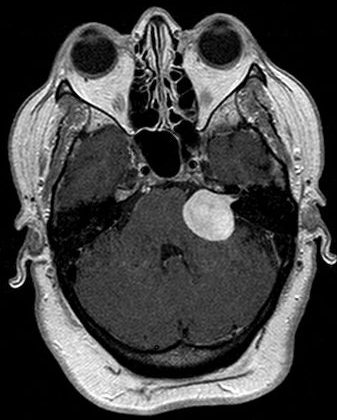Controllo endoscopico pre e post intervento di exeresi di neoformazione della corda vocale destra asportato mediante intervento di cordectomia LASER di III tipo dopo vestibulectomia. L’esame istologico definitivo ha confermato un carcinoma squamocellulare G2 pT1a asportato in margini indenni.

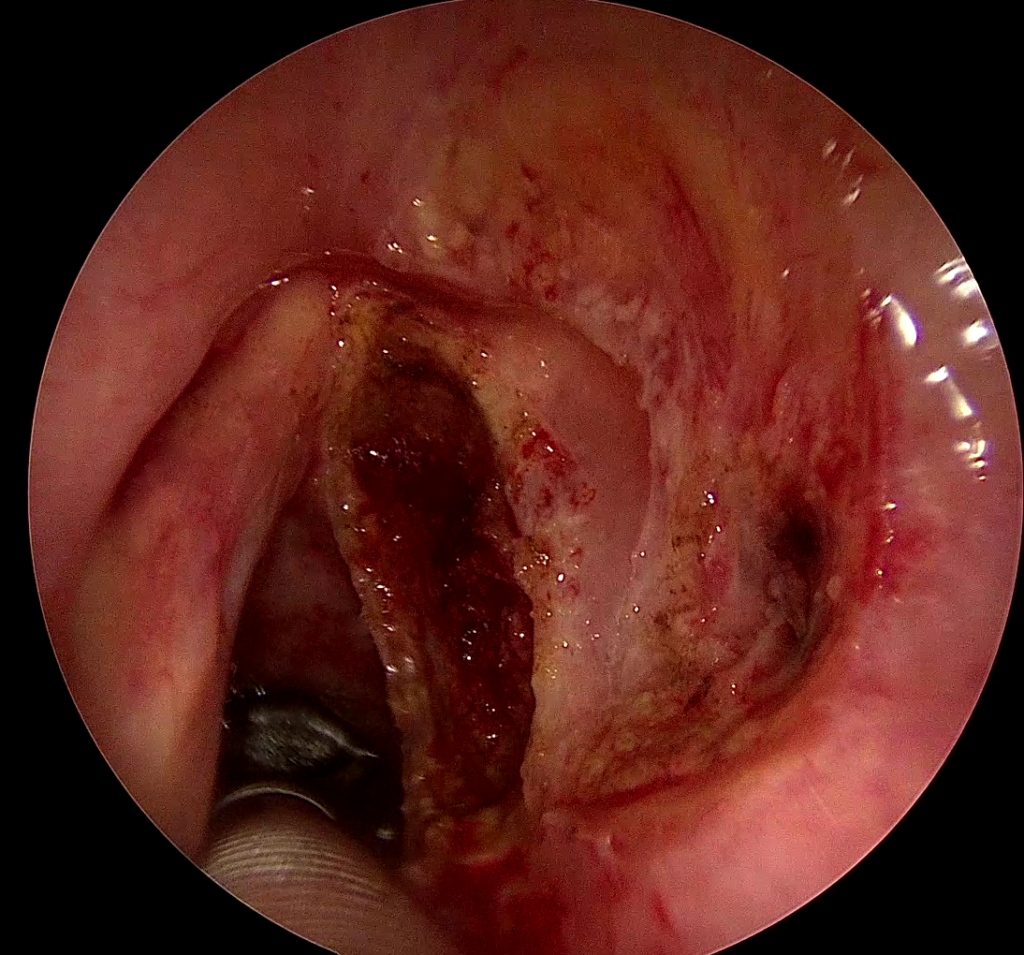
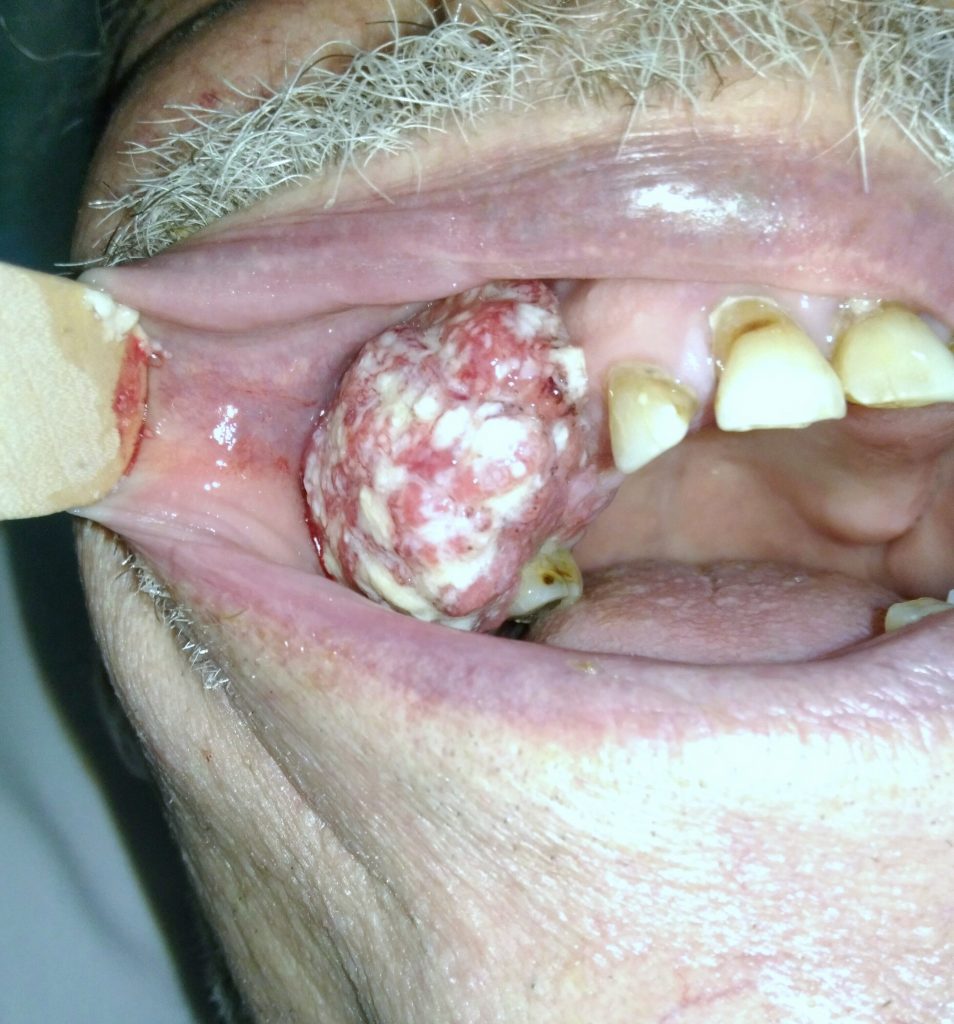 Patient with squamous alveolar ridge top right. The patient was treated with maxillectomia bottom right, the breach was rebuilt with surgical flap of temporal muscle
Patient with squamous alveolar ridge top right. The patient was treated with maxillectomia bottom right, the breach was rebuilt with surgical flap of temporal muscle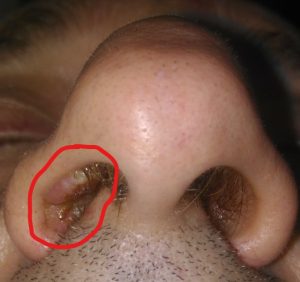
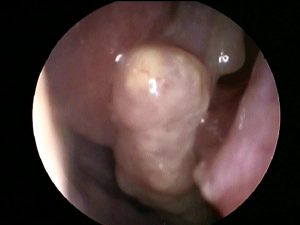 Inverted papilloma or schneideriano is a generally benign neoformation polypoid sinus ethmoidal cells or from which originates the maxillary sinuses and commonly cause symptoms when it cantilevers out in nasal cavity.
Inverted papilloma or schneideriano is a generally benign neoformation polypoid sinus ethmoidal cells or from which originates the maxillary sinuses and commonly cause symptoms when it cantilevers out in nasal cavity.
